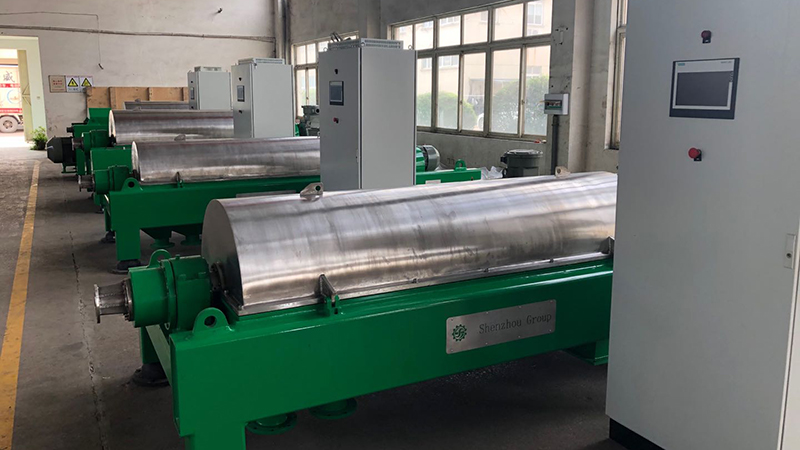Avocado Oil Cold Pressed Line Plant Fresh Avocado Oil Extraction Machine unrefined, extra virgin cold-pressed avocado oil
To have optimal oil quality, avocado fruit should not be overripe and also should have minimal rots or other postharvest disorders (such as flesh greying due to long storage).
The amount of oil extracted from mature and ripe avocados earlier in the season has been found to be only approximately 75% of the maximum available oil in the flesh (15% oil by fresh weight) compared to later in the season when it is possible to extract more than 90% of the available oil, this being the maximum oil yield (≈25% oil by fresh weight).

EXTRACTION OF AVOCADO OIL
The process for recovering oil from ripe avocados is a mechanical extraction, similar to olive oil extraction, with the additional step of removing the skin and stone (seed).
After this, the flesh is ground to a paste and then malaxed for 40-60 minutes at 45-50°C. This is a higher malaxing temperature than used for olive oil extraction, but it is still considered to be cold-pressed extraction for avocado oil. The slightly higher temperature aids the extraction of the oil from the oil-containing cells and does not affect the quality of the oil.
The oil and water phases are separated from the pulp using a high-speed decanting centrifuge, and then the oil is separated from the water in final polishing centrifuges. The pulp from the decanting centrifuge and waste skin/seeds are returned to orchards for soil conditioning and mulch, or used as animal feed.

Avocado oil, if extracted from sound fruit (no rots, physiological disorders, or damage), will result in oil with a very low percentage of free fatty acids (%FFA) (<0.5% as oleic acid). Also, the peroxide values (PV) can be very low (<2 meq/kg). Recommended standards for extra virgin avocado oil have proposed a maximum PV of 4 meq/kg (Table 1).
In sound, ripened fruit, the level of lipolysis that occurs is low, resulting in low %FFA. The fruit does not need to be processed immediately after ripening, but long delays should be avoided. Generally a higher %FFA is due to poor-quality fruit, delays in processing ripened fruit, or poor manufacturing practices.

1. Fruit washing process
The first washing is performed by immersion in order to remove dust from the surface of the fruits. The soft water flow generated by a jet system gathers fruits by a plastic bucket elevator, which has two functions, i.e., washing fruits a second time by showering them and working as a water dripping.
2. Fruit depulping process
The elevator takes then the fruits into the destoning machine,where pips and around 90% of skin are separated from the pulp. Skin separation needs to be calibrated according to the desidered quality, since the proportion of skin into the processed mash may affect the pigment composition of avocado oil.
3. Pulp crushing process
The pulp (which is crushed during destoning) with a variable proportion of skin is pumped into a disc crusher for further refining. The disc crusher rotates continuously at 1400 rpm.The disc crusher is important to cut the filaments remained in the paste and, at the same time, to minimise the emulsion.
4. Horinzontal malaxing process
After crushing, the avocado mash is pumped into the section equipped with malaxers (kneading machines). Each kneading machine consists of a stainless steel tank with a central screw stirring the mash slowly and continously at a monitored temperature.
Small oil drops released during fruit milling merge into large drops that can be easily separated by centrifugal extraction.In the case of the avocado mash, our experience showed that malaxing time should not exceed 90 min and temperature should be below 50°C.
5. Oil-water-poamce separation
The separation of oil from solid and liquid phases is done using a decanter centrifuge. This device exploits the centripetal acceleration to separate continuously a mixture of particulate solids and liquids with phases having different densities. Seems that the best decanter centrifuge applicable to extraction is the three phase version.
In this machine, the mash coming from kneading is fed into the machine together with about 10-20% of hot water (at the same temperature as the mash) depending on the characteristics of product. The mash inside the centrifuge is separated into oil, vegetation water and solids (exhausted pulp and residual skin).
The oil phase and the water phase are collected separately under the decanter. The oil phase is pumped out to a vertical purifier centrifuge, while the water phase is pumped out to a vertical concentrator centrifuge.
6. Oil purification and recovery
The flowing from the decanter still has a certain amount of water and solids. Vegetation water from the decanter should still contain a small quantity of residual oil. The system consists of a disk stack centrifuge for final purification to remove residual water and solids. A second disk stack centrifuge should be used to recover residual from the vegetation water flowing from the decanter.

Copyright © 2025 Shenzhou Group Co.,Ltd/Liaoyang Shenzhou Machinery Equipment Co.,Ltd - www.lnszjx.com All Rights Reserved.辽ICP备18010813号-1